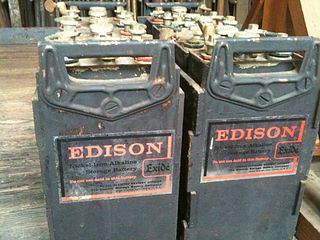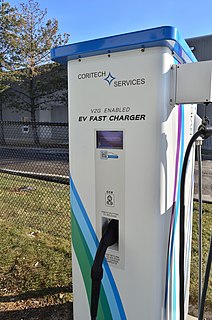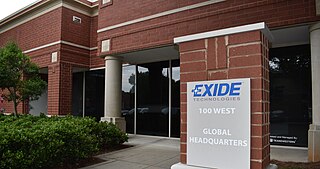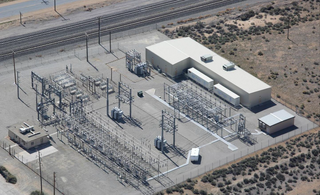
Thomas Alva Edison was an American inventor and businessman. He developed many devices in fields such as electric power generation, mass communication, sound recording, and motion pictures. These inventions, which include the phonograph, the motion picture camera, and early versions of the electric light bulb, have had a widespread impact on the modern industrialized world. He was one of the first inventors to apply the principles of organized science and teamwork to the process of invention, working with many researchers and employees. He established the first industrial research laboratory.

Phonograph cylinders are the earliest commercial medium for recording and reproducing sound. Commonly known simply as "records" in their era of greatest popularity, these hollow cylindrical objects have an audio recording engraved on the outside surface, which can be reproduced when they are played on a mechanical cylinder phonograph. In the 1910s, the competing disc record system triumphed in the marketplace to become the dominant commercial audio medium.
Electrification is the process of powering by electricity and, in many contexts, the introduction of such power by changing over from an earlier power source.

Southern California Edison, the largest subsidiary of Edison International, is the primary electricity supply company for much of Southern California. It provides 15 million people with electricity across a service territory of approximately 50,000 square miles. However, the Los Angeles Department of Water and Power, San Diego Gas & Electric (SDG&E), Imperial Irrigation District, and some smaller municipal utilities serve substantial portions of the southern California territory. The northern part of the state is generally served by the Pacific Gas & Electric Company of San Francisco. Other investor-owned utilities (IOUs) in California include SDG&E, PacifiCorp, Bear Valley Electric, and Liberty Utilities.

The nickel–iron battery is a rechargeable battery having nickel(III) oxide-hydroxide positive plates and iron negative plates, with an electrolyte of potassium hydroxide. The active materials are held in nickel-plated steel tubes or perforated pockets. It is a very robust battery which is tolerant of abuse, and can have very long life even if so treated. It is often used in backup situations where it can be continuously charged and can last for more than 20 years. Due to its low specific energy, poor charge retention, and high cost of manufacture, other types of rechargeable batteries have displaced the nickel–iron battery in most applications.

The Black Maria was Thomas Edison's film production studio in West Orange, New Jersey. It was the world's first movie studio.

Vehicle-to-grid (V2G) describes a system in which plug-in electric vehicles (PEV), such as battery electric vehicles (BEV), plug-in hybrids (PHEV) or hydrogen fuel cell electric vehicles (FCEV), communicate with the power grid to sell demand response services by either returning electricity to the grid or by throttling their charging rate. V2G storage capabilities can enable EVs to store and discharge electricity generated from renewable energy sources such as solar and wind, with output that fluctuates depending on weather and time of day.

Thomas Edison National Historical Park preserves Thomas Edison's laboratory and residence, Glenmont, in West Orange, New Jersey, United States. These were designed, in 1887, by architect Henry Hudson Holly. The Edison laboratories operated for more than 40 years. Out of the West Orange laboratories came the motion picture camera, improved phonographs, sound recordings, silent and sound movies and the nickel-iron alkaline electric storage battery.

The NZR RM class Edison battery-electric railcar was a railcar that ran in Canterbury, New Zealand for eight years. It was built for New Zealand Railways (NZR) as a prototype for battery-electric railcars. While the railcar, classified "RM 6", was considered the first successful railcar in New Zealand, it was later destroyed in a fire, and battery-electric traction for railcars was not developed further in New Zealand. Two other classes of battery-electric locomotives were introduced about the same time as RM 6, the E class of 1922 and the EB class of 1925.

Exide was originally a brand name for batteries produced by The Electric Storage Battery Company and later became Exide Corporation doing business as Exide Technologies, an American multinational lead-acid batteries manufacturing company. It manufactures automotive batteries and industrial batteries. It is based in Milton, Georgia, United States.

Miller Reese Hutchison was an American electrical engineer and inventor. He developed some of the first portable electric devices, such as a vehicle horn and a hearing aid. His father was William Hutchison and mother born Tracie Elizabeth Magruder. He attended Marion Military Institute from 1889 through 1891, Spring Hill College 1891 through 1892, the University of Mobile Military Institute from 1892 through 1895, and graduated from Auburn University in 1897. While still in school he invented and patented a lightning arrester for telegraph lines in 1895. At the outbreak of the Spanish–American War in 1898, he volunteered and was appointed engineer for the United States Lighthouse Board, laying cables and mines to protect harbors in the Gulf of Mexico.

The Edison Manufacturing Company was a company organized in 1889 by the inventor and entrepreneur Thomas Edison that manufactured batteries, machinery and equipment, and also produced kinetoscope films. Its assets and operations were transferred to Thomas A. Edison, Inc. in 1911.

Thomas A. Edison, Incorporated was the main holding company for the various manufacturing companies established by the inventor and entrepreneur Thomas Edison. It was a successor to Edison Manufacturing Company and operated between 1911 and 1957, when it merged with McGraw Electric to form McGraw-Edison.

Edison Storage Battery Company Building, is located at 177 Main Street and Lakeside Avenue in West Orange, Essex County, New Jersey, United States. The building was added to the National Register of Historic Places on February 28, 1996.
Vivint Solar, Inc. is an American solar energy company headquartered in Lehi, Utah. It is a residential solar provider that designs, installs, and maintains photovoltaic systems.

A major fire broke out in a 20th Century-Fox film-storage facility in Little Ferry, New Jersey, United States, on July 9, 1937. Flammable nitrate film had previously contributed to several fires in film-industry laboratories, studios, and vaults, although the precise causes were often unknown. In Little Ferry, gases produced by decaying film, combined with high temperatures and inadequate ventilation, resulted in spontaneous combustion.
Edison Properties is a privately owned real estate holding and development firm based in Newark, New Jersey founded in 1956. The company has holdings in New Jersey, New York City, and Baltimore including many parking lots marketed under ParkFast and storage units marketed under Manhattan Mini Storage. The company is affiliated with the family-run Gottesman Real Estate Partners.

A battery storage power station is a type of energy storage power station that uses a group of batteries to store electrical energy. Battery storage is the fastest responding dispatchable source of power on grids, and it is used to stabilise grids, as battery storage can transition from standby to full power within milliseconds to deal with grid failures.

The Tehachapi Energy Storage Project (TSP) is a 8MW/32MWh lithium-ion battery-based grid energy storage system at the Monolith Substation of Southern California Edison (SCE) in Tehachapi, California, sufficient to power between 1,600 and 2,400 homes for four hours. At the time of commissioning in 2014, it was the largest lithium-ion battery system operating in North America and one of the largest in the world. TSP is considered to be a modern-day energy storage pioneer with significant accomplishments that have proven the viability of utility-scale energy storage using lithium-ion technology. While originally envisioned as a research and development project, TSP operated as a distribution-level resource for SCE and for calendar year 2020, SCE reported that TSP operated in the wholesale energy market with revenue exceeding operating and maintenance costs. In 2021, SCE began the decommissioning of TSP.















